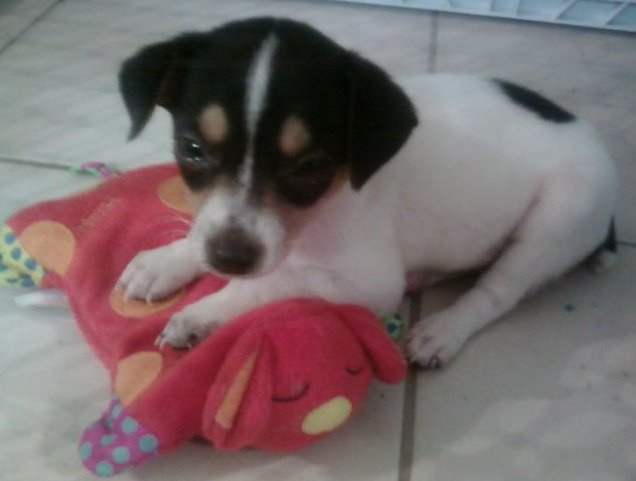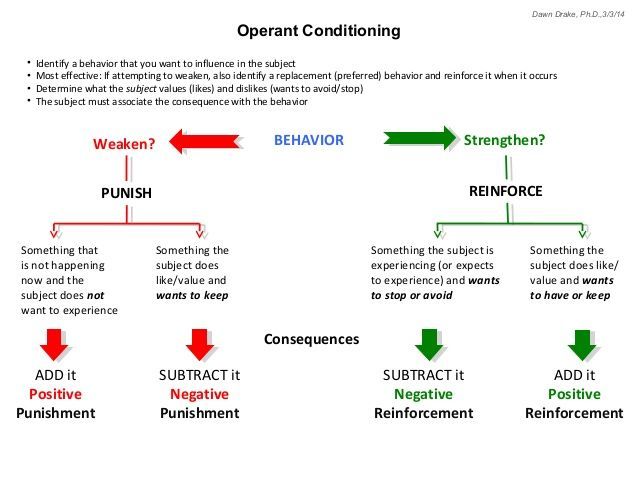Robert Hall’s Updates
Update 1: Operant Conditioning - Potty Training My Rat Terrier
Operant conditioning, behaviorist theory suggested by B. F. Skinner, uses reward and punishment toteach and train specific behaviors. As in the cartoon above, the rats find it interseting that the graduate student sighs each time they press the lever; the graduate student has beened conditioned to behave with a sigh. Skinner used rats, pigeons, and other animals to test and prove his theory about behavior and conditioned responses to stimuli. Without realizing it, I potty trained my rat terrier using this psychological and behavior theory.
In the following images, my rat terrier, Mickey (black face, RAT terrier, Mickey Mouse, it took about 30 seconds fo rmy kids to name him), at about 7 weeks old and then again recently, about 8 years old.
Mickey was a rescue dog. How I came to wecome Mickey into my home is a long story that will go untold for now. We received him a little too young to be separated from his mother, but it was necessary for his survival. Though allergic, my wife insisted that, because if Mickey's small size and frail condition at the time, we keep him in the house. He absolutely had to be potty trained.
How do potty train a puppy so young? How do you avoid accidents in the dark recesses of the house? How do you ensure that, once trained, accidents don't happen in the future? My wife and I were too inexperienced with dog training to know any different and did these things that, by accident or a miracle, worked. Today, at almost 10 years old (he will be 10 this May), there has been 2 or 3 "accidents" since his successful training, at only 10 weeks.
What did we do? Knowing that dogs are actually very clean animals and tend to return to the same spot to do their "business" and are smell oriented when choosing said spot, we purchased kitty litter and filled the bottom section of a disassembled dog carrier. It only took 2 weeks; but, it took 2 weeks of constant, almost around the clock observation and physically pushing Mickey to the Tidy Cat "litter box" before he asociated the feel and the smell of the litter as his 'bathroom.' A yummy treat always followed successful bathroom goings. Even after he was consistently using the 'litter box' and had no accidents around the house, the treat reward continued for several weeks. We thought this would reinforce the behavior.
The following short video outlines this process:
We avoided negative reinforcement and chose only positive rewards. A dog wants a treat; we reinforced the behavior we wanted with the reward he wanted. Physical, corporal punishment that so often accompanies dog 'training' was absent from our reinforcement of Mickey's behavior.
The results... It took about 3 weeks for Mickey to be fully potty trained to use Tidy Cat and has maintained successful bathroom habits for almost 10 years. A funny sidenote to this experience is that he knows when and if a different brand of cat little is purchased and expresses his dissatisfaction. Once, we purchased less expensive, store brand litter; Mickey's reaction was noticeably anti store brand stuff. No accidents then; but, he also whined and was timid about entering the littler box. We returned to Tidy Cat and he's one happy dog.
The following chart describes what we did to potty train our dog, again without knowing or specifically following behaviorist theory.
In my experience with my dog, it was strictly positive reinforcement intended to strengthen desired behavior that won the day. To apply this to the classroom, like an animal, each student has his or her own way of responding to stimuli. Learning each student's 'hot button' is an important variable in conditioning each to desired behavior. One may only respond to added punishment while another may only respond to positive rewards. I don't believe there is a one-size-fits-all apporach to this theory. So, maybe, the larger question is how to do we quickly learn those 'hot buttons' for each student and how do we use that information to condition the one while working concurrently with the many?






